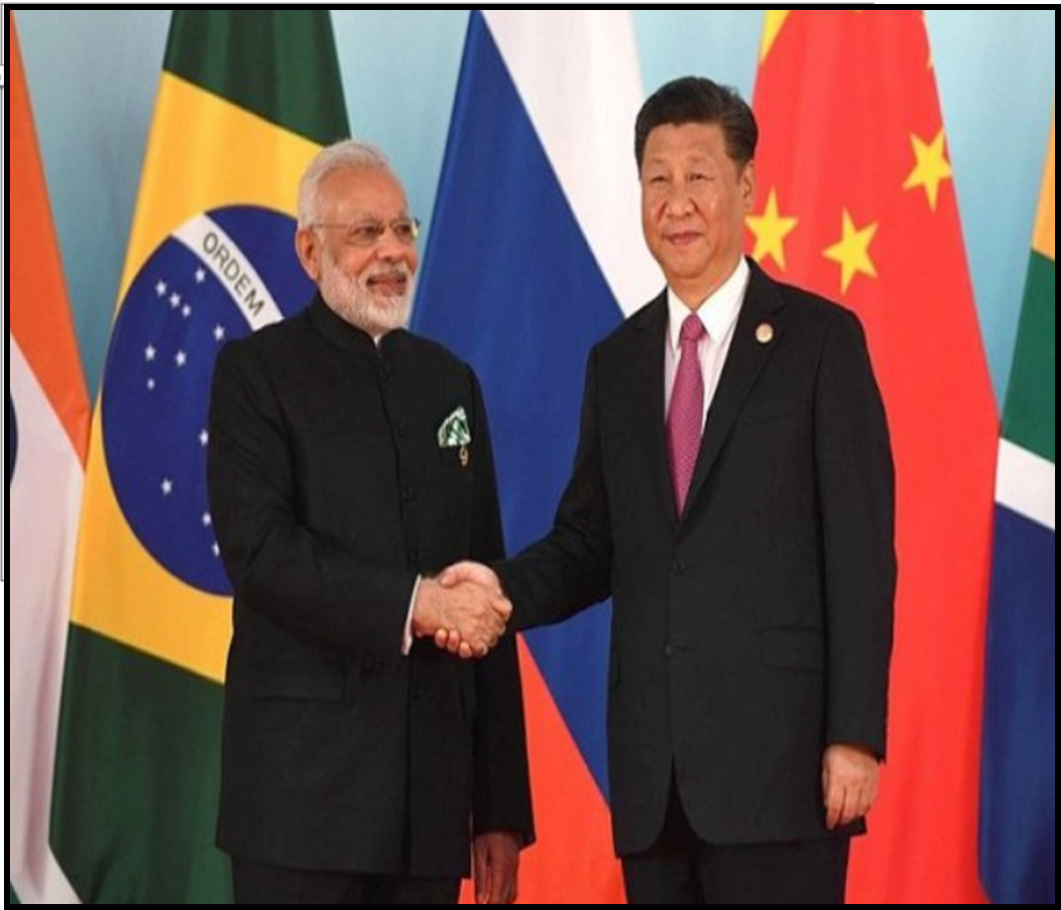CHINA’S REFORMS OPEN DOORS FOR INDIA
Syllabus:
- GS 2: Bilateral Relations
Why in the News?
The International Monetary Fund has just released its recent economic growth forecast for China and India, underlining the pivotal stage of development both countries are at and the interdependence between their futures in global economy.
Source: India Today
Introduction
- China and India, pivotal in global development, are advancing rapidly.
- With China’s modernization plans and India’s growth, both nations emphasize reform, development, and cooperation.
- As interdependent economies, their collaborative future promises shared prosperity and global economic stability.
| India-China Diplomatic Relations
Historical Milestones
Key Agreements and Visits
Recent Developments
|
Chinese Modernization: An Overview
Third Plenary Session Highlights
- The recent Third Plenary Session of the 20th Central Committee of the Communist Party of China (CPC) offered a glimpse into Chinese modernization.
- Key aspects include technological innovation, sustainable development, and social progress, emphasizing
- China’s commitment to a modern, efficient, and inclusive society.
Highlights from the 20th CPC Central Committee’s Third Plenary Session
Reforms
- The Plenary meeting proposed over 300 significant reforms spanning the economy, politics, culture, society, and ecological conservation.
Economic Focus
- High-Standard Market Economy: Aiming to develop a robust socialist market economy and a fairer, dynamic market environment.
- Internal Driving Forces: Emphasizing creativity and innovation within society.
Global Impact
- Positive Energy: The reforms aim to contribute positively to a global economy facing uncertainties.
Development
- Economic Recovery: Despite concerns over a “slowdown,” China’s economy shows positive recovery with a 5% GDP growth in early 2024.
- New Quality Productive Forces: President Xi Jinping’s concept of “new quality productive forces” aims to boost competitive industries like high-end equipment, new-energy vehicles, and photovoltaics.
- Competitive Industries: China has over 140,000 specialized small and medium enterprises producing unique products, driving high-end, intelligent, and green manufacturing for future growth.
China’s Commitment to Opening Up
Continuous Openness
- Historical Commitment: China has been committed to opening up since the late 1970s, and it remains dedicated to expanding its openness.
- Future Plans: China will only open its doors wider, despite external uncertainties and significant changes.
Alignment with Global Standards
- International Rules: China aims to align with high-standard international economic and trade rules.
- Market Access: Plans to further relax market access and foster a world-class, market-oriented, law-based, and internationalized business environment.
Enhanced Convenience
- Visa Policies: Implemented unilateral visa-free policies for several countries.
- Foreign Travelers: Plans to provide further conveniences in accommodation, medical services, and payments.
Foreign Investment
- Attraction: China attracted nearly 500 billion yuan in foreign investment in the first half of 2024.
- Opportunities: Open to sharing opportunities with Indian and other foreign enterprises.
China’s Commitment to Peace
Independent Foreign Policy
- Shared Future: China aims to promote a shared future for mankind through initiatives like the Global Development Initiative, Global Security Initiative, and Global Civilization Initiative.
- Sovereignty and Security: China is committed to safeguarding its sovereignty, security, and development interests.
Peaceful Development
- Reaffirmation: President Xi Jinping recently reaffirmed China’s commitment to peaceful development at the 70th Anniversary of the Five Principles of Peaceful Coexistence.
- Collaboration with India: China is ready to collaborate with India to create a better future for all humanity.
China’s Educational Advancements
Strategic Importance
- Education and Talent: Education and talent development are crucial to Chinese modernization.
- China boasts the world’s largest education system, with new labour market entrants averaging over 14 years of education.
Higher Education and Innovation
- Higher Education: China has 250 million people with higher education.
- Technological Breakthroughs: The country has achieved significant advancements in core technologies and is now among the world’s innovative nations.
Collaboration with India
- China welcomes Indian students and sees potential for mutual cooperation in education.
- As highlighted by the recent inauguration of Nalanda University’s new campus Prime Minister Modi’s emphasis on learning and innovation.
China’s Commitment to Ecological Harmony
Green Area and Clean Power
- Green Area: China has added a quarter of the world’s new green areas since 2000.
- Clean Power: China leads globally in hydropower, wind power, and solar photovoltaic power generation.
Environmental Goals
- Climate Action: China is focused on reducing carbon emissions, cutting pollution, and promoting green development.
- Global Cooperation: China aims to collaborate with other nations to foster a clean and beautiful world while contributing significantly to global green transition efforts.
Strengthening China-India Relations
Reform and Economic Opportunities
- Reform Goals: Under CPC leadership, China is confident in achieving its reform targets and expanding global economic opportunities.
Cooperation with India
- Partnership Vision: China and India view each other as cooperation partners, not threats.
- Future Collaboration: China aims to align with India to enhance bilateral relations and jointly pursue development and revitalization goals.
Conclusion
China’s modernization offers mutual benefits through comprehensive reforms, development, and cooperation. Embracing these opportunities can foster a stronger partnership with India, advancing global prosperity and shared goals.
Source:Livemint
Mains Practice Question:
Evaluate the potential areas of cooperation between China and India, how can both nations leverage their developmental strategies to enhance bilateral relations and address global challenges?
Associated Article:




